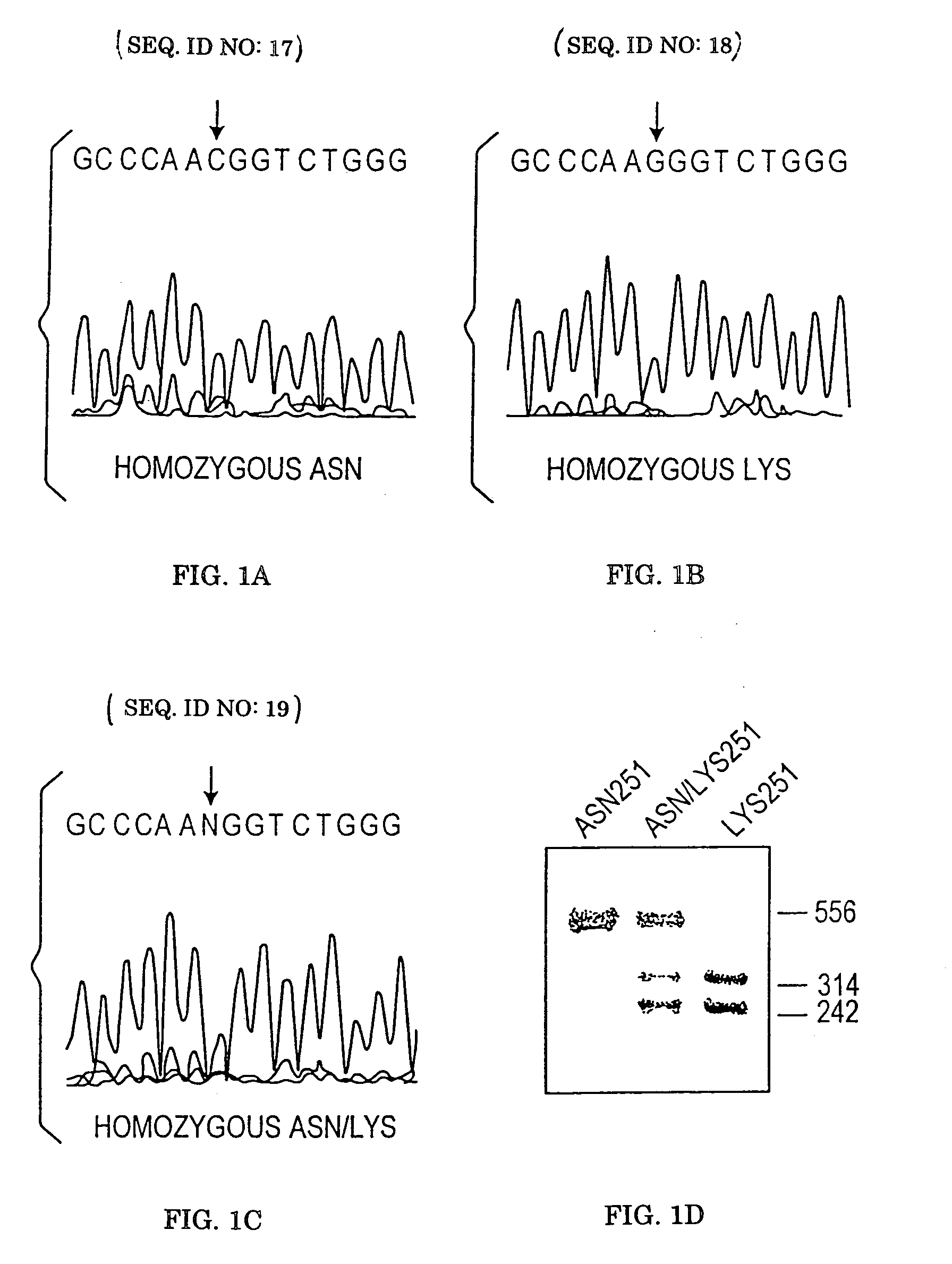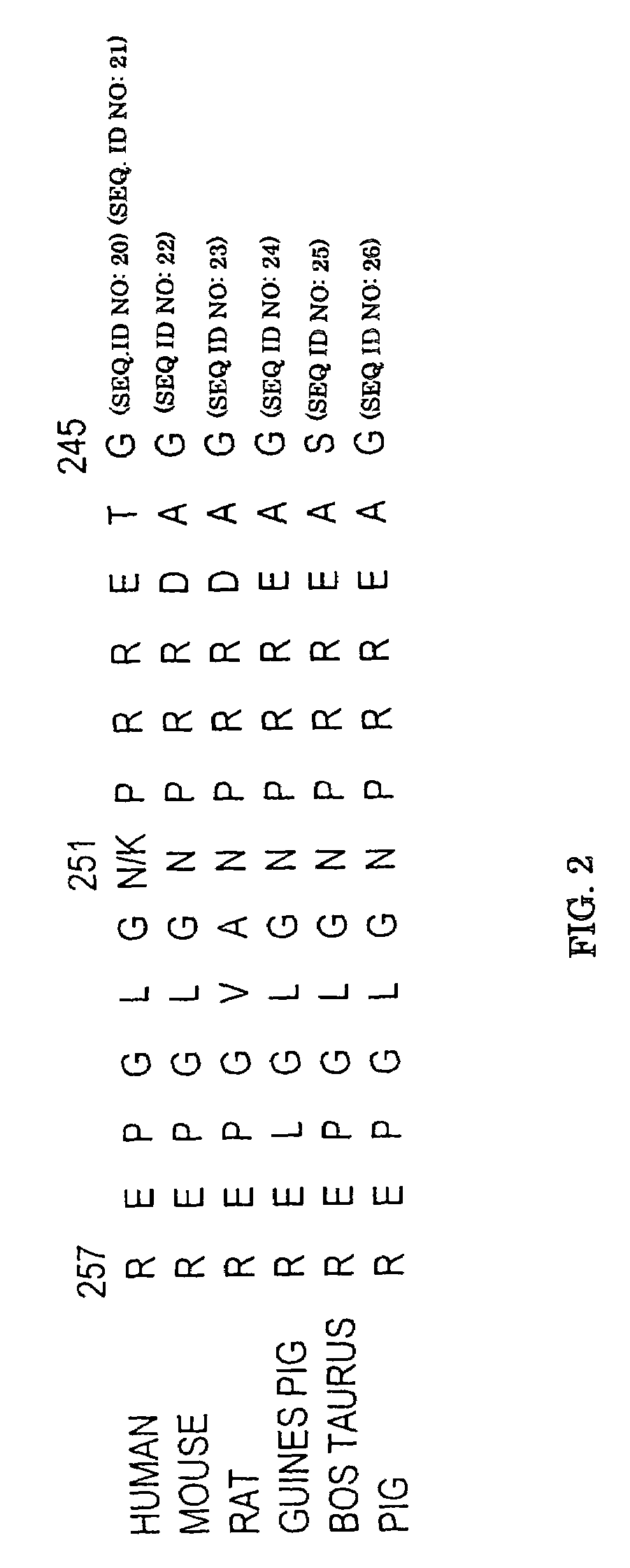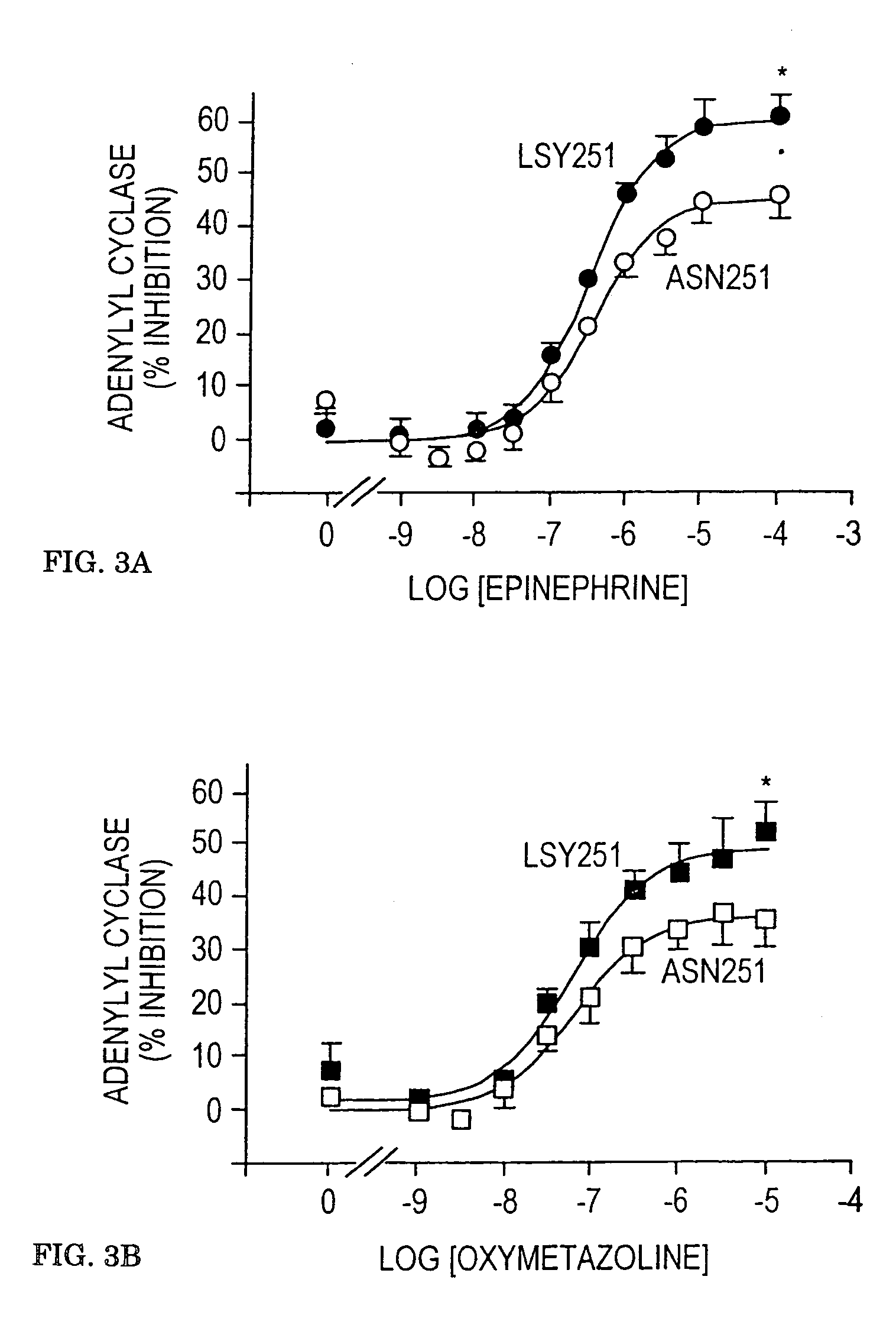Alpha-2A-adrenergic receptor polymorphisms
a technology of beta-2aadrenergic receptor and polymorphism, which is applied in the field of polymorphism, can solve the problem that no pharmacologic study was carried out to determine if these polymorphisms alter the function of receptors
- Summary
- Abstract
- Description
- Claims
- Application Information
AI Technical Summary
Benefits of technology
Problems solved by technology
Method used
Image
Examples
example 1
[0173]The intronless wild-type human alpha-2AAR gene identified as SEQ ID NO: 1 (GenBank Accession #AF281308 which includes the sequenic corrections illuminated by Guyer et al, 1990) was amplified by overlapping PCR reactions from genomic DNA derived from blood samples. The 1350 bp coding sequence as well as 341 bp 5′UTR and 174 bp 3′UTR were examined. For convenience, the adenine of the initiator ATG codon is designated as nucleotide 1 and amino acid 1 is the encoded methionine. The human receptor consists of 450 amino acids. For initial examination, DNA from 27 hypertensive individuals was utilized. Overlapping PCR products encompassing the α2A gene were designated fragments 1–5 and were generated using the following primers: Fragment 1 (600 bp), 5′-TTTACCCATCGGCTCTCCCTAC-3′ (sense) SEQ ID NO: 5 and 5′-GAGACACCAGGAAGAGGTTTTGG-3′ (antisense) SEQ ID NO: 6; Fragment 2 (467 bp) 5′-TCGTCATCATCGCCGTGTTC-3′ (sense) SEQ ID NO: 7 and 5′-CGTACCACTTCTGGTCGTTGATC-3′ (ant...
example 2
Constructs and Cell Transfection
[0174]To create the polymorphic alpha-2AAR Lys251 construct, a portion of the coding region of alpha-2AAR gene containing a G at nucleotide position 753 was amplified from a homozygous individual using fragment 2 sense and fragment 4 antisense primers (see PCR conditions described in Example 1). This fragment was digested with and subcloned into the Bgl II and Sac II sites of the wild type α2AAR sequence in the expression vector pBC12B1. Chinese hamster ovary cells (CHO-K1) were permanently transfected by a calcium phosphate precipitation technique as previously described using 30 μg of each receptor construct and 3.0 μg of pSV2neo to provide for G418 resistance by the methods of Eason, M. G. and Liggett, S. B. (1992) J. Biol. Chem. 267, 25473–25479). Selection of positive clones was carried out in 1.0 mg / ml G418 and expression of the alpha-2AAR from individual clonal lines was determined by radioligand binding as described below. Cells were grown in ...
example 3
Adenylyl Cyclase Activities
[0175]Alpha-2AAR inhibition of adenylyl cyclase was determined in membrane preparations from CHO cells stably expressing the two receptors using methods similar to those previously described (Eason, M. G., Moreira, S. P., and Liggett, S. B. (1995) J. Biol. Chem. 270, 4681–4688). Reactions consisted of 20 μg cell membranes, 2.7 mM phosphoenolpyruvate, 50 μM GTP, 0.1 mM cAMP, 0.12 mM ATP, 50 μg / ml myokinase, 0.05 mM ascorbic acid and 2 μCi of [α-32P]ATP in a buffer containing 40 mM HEPES, pH 7.4, 1.6 mM MgCl2 and 0.8 mM EDTA for 30 minutes at 37° C. Reactions were terminated by the addition of a stop solution containing excess ATP and cAMP and ˜100,000 dpm of [3H]cAMP. Labeled cAMP was isolated by gravity chromatography over alumina columns with [3H]cAMP used to quantitate column recovery. Activities were measured in the presence of water (basal), 5 μM forskolin, and 5 μM forskolin with the indicated concentrations of agonists. Results are expressed as perce...
PUM
| Property | Measurement | Unit |
|---|---|---|
| melting temperatures | aaaaa | aaaaa |
| melting temperatures | aaaaa | aaaaa |
| diameter | aaaaa | aaaaa |
Abstract
Description
Claims
Application Information
 Login to View More
Login to View More - R&D
- Intellectual Property
- Life Sciences
- Materials
- Tech Scout
- Unparalleled Data Quality
- Higher Quality Content
- 60% Fewer Hallucinations
Browse by: Latest US Patents, China's latest patents, Technical Efficacy Thesaurus, Application Domain, Technology Topic, Popular Technical Reports.
© 2025 PatSnap. All rights reserved.Legal|Privacy policy|Modern Slavery Act Transparency Statement|Sitemap|About US| Contact US: help@patsnap.com



